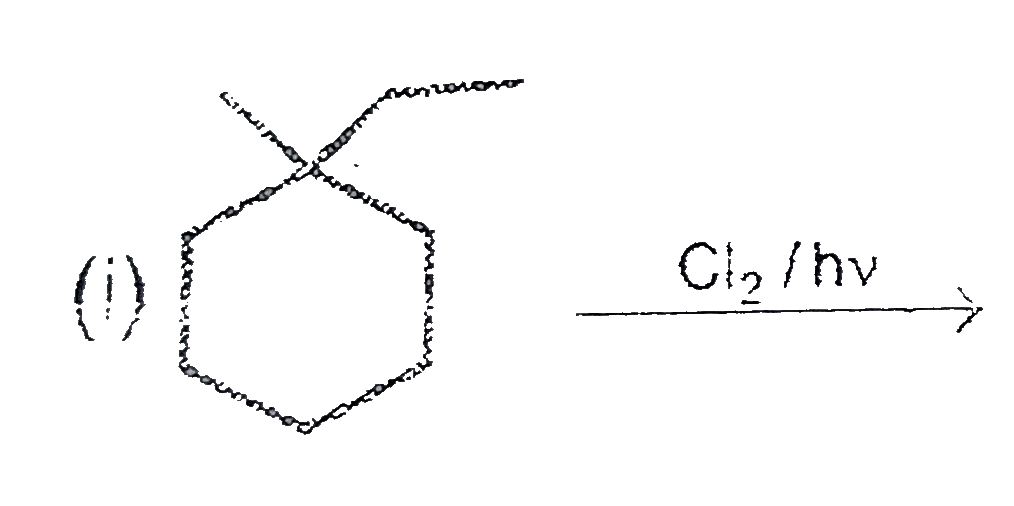Read the following reactions and choose the correct option
(i) PepsinogenHCl−−→ Pepsin
(ii) Proteinspepsinogen−−−−−→Proteoses + Peptones
(III)Trypsinogen HCl−−→ Trypsin
(Iv) Chymotrypsinogenenterokinase−−−−−−→Chymotrypsin
(v ) Peptonestrypsin−−−→Dipeptides
I alone is correct
I and v alone are correct
iii and v alone are correct
ii alone is are correct
The correct Answer is:B
To solve the question regarding the reactions involving digestive enzymes, we will analyze each reaction step by step.
1. Analyzing Reaction (i):
- The reaction states: "Pepsinogen" overset(HCl) rarr "Pepsin".
- Explanation: Pepsinogen is an inactive enzyme (zymogen) that is converted to its active form, pepsin, in the presence of hydrochloric acid (HCl) in the stomach.
- Conclusion: This reaction is correct.
2. Analyzing Reaction (ii):
- The reaction states: "Proteins" overset("pepsinogen") rarr "Proteoses + Peptones".
- Explanation: The correct enzyme that breaks down proteins into proteoses and peptones is pepsin, not pepsinogen. Pepsinogen is the inactive form, and it does not directly act on proteins.
- Conclusion: This reaction is incorrect.
3. Analyzing Reaction (iii):
- The reaction states: "Trypsinogen" overset(HCl) rarr "Trypsin".
- Explanation: Trypsinogen is also an inactive enzyme that is converted to trypsin, but this conversion occurs in the intestine with the help of enterokinase, not HCl.
- Conclusion: This reaction is incorrect.
4. Analyzing Reaction (iv):
- The reaction states: "Chymotrypsinogen" overset("enterokinase") rarr "Chymotrypsin".
- Explanation: Chymotrypsinogen is converted to chymotrypsin, but this conversion is actually facilitated by trypsin, not enterokinase.
- Conclusion: This reaction is incorrect.
5. Analyzing Reaction (v):
- The reaction states: "Peptones" overset("trypsin") rarr "Dipeptides".
- Explanation: Trypsin acts on peptones to break them down into smaller peptides, including dipeptides.
- Conclusion: This reaction is correct.
Final Conclusion:
From the analysis:
- Reaction (i) is correct.
- Reaction (ii) is incorrect.
- Reaction (iii) is incorrect.
- Reaction (iv) is incorrect.
- Reaction (v) is correct.
Thus, the correct options are 1st and 5th reactions.
- The reaction states: "Pepsinogen" overset(HCl) rarr "Pepsin".
- Explanation: Pepsinogen is an inactive enzyme (zymogen) that is converted to its active form, pepsin, in the presence of hydrochloric acid (HCl) in the stomach.
- Conclusion: This reaction is correct.
- The reaction states: "Proteins" overset("pepsinogen") rarr "Proteoses + Peptones".
- Explanation: The correct enzyme that breaks down proteins into proteoses and peptones is pepsin, not pepsinogen. Pepsinogen is the inactive form, and it does not directly act on proteins.
- Conclusion: This reaction is incorrect.
- The reaction states: "Trypsinogen" overset(HCl) rarr "Trypsin".
- Explanation: Trypsinogen is also an inactive enzyme that is converted to trypsin, but this conversion occurs in the intestine with the help of enterokinase, not HCl.
- Conclusion: This reaction is incorrect.
- The reaction states: "Chymotrypsinogen" overset("enterokinase") rarr "Chymotrypsin".
- Explanation: Chymotrypsinogen is converted to chymotrypsin, but this conversion is actually facilitated by trypsin, not enterokinase.
- Conclusion: This reaction is incorrect.
- The reaction states: "Peptones" overset("trypsin") rarr "Dipeptides".
- Explanation: Trypsin acts on peptones to break them down into smaller peptides, including dipeptides.
- Conclusion: This reaction is correct.
From the analysis:
- Reaction (i) is correct.
- Reaction (ii) is incorrect.
- Reaction (iii) is incorrect.
- Reaction (iv) is incorrect.
- Reaction (v) is correct.
Similar Questions
In the reaction
 OCH3HBr−−→ the product are:
OCH3HBr−−→ the product are:
View SolutionIn the reaction
 OCH3HBr−−→ the product are:
OCH3HBr−−→ the product are:
View SolutionWhich of the following representation is incorrect for vector equation →R=→P+→Q

View SolutionThe compound (A) in the following reaction sequence is:
(A) PCl5−−→ (B) Alc KOH−−−−→ ( C) H2/Ni−−−→
Propane :
View SolutionIn the following reaction sequence Y is,
PhOCOCH3AlCl3−−→Δ(X)I2−−−→NaOH(Y)
View SolutionA and B in the following reactions are respectively
(i) CHCl3Zn + H2O−−−−−→A (ii) CHCl3Zn+HCl−−−−−→ B
View SolutionIn the following reaction C is, CH3−CH=CH2+ HCl
Organic−−−−−−→PeroxideAAg2O−−−−−→MoistBEt MgBr−−−−→C
View SolutionNumber of monocloro structural isomers of :
(i) , Cl2/hv−−−→ " " (ii)
, Cl2/hv−−−→ " " (ii)  , Cl2/hv−−−→
, Cl2/hv−−−→
View SolutionIn the following sequence of reaction, the product C is
CH3−BrKCN−−→AH2O+−−−→BLiAlH4−−−→EtherC
View SolutionIn the reaction
CH3CN+2HHCl−−−−−→EtherXBoiling H2O−−−−−−−→Y,
the term Y is
View Solution